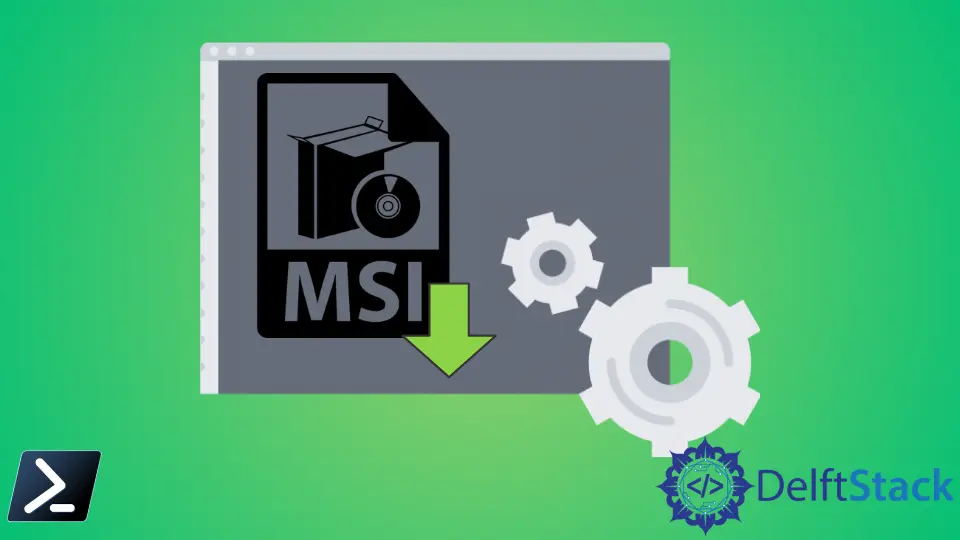How to Install MSI File in PowerShell
- Understanding MSI Files
- Method 1: Installing MSI Files Using Start-Process
- Method 2: Using Invoke-Expression for MSI Installation
- Method 3: Using WMI for MSI Installation
- Conclusion
- FAQ

Installing MSI files can sometimes feel like a daunting task, especially for those who are new to using PowerShell. However, with the right guidance, you can easily install MSI files using PowerShell commands.
This article aims to provide a straightforward solution for installing MSI files through PowerShell, making the process smoother and more efficient. Whether you are a developer looking to automate software installations or a system administrator managing multiple machines, mastering this technique will enhance your toolkit. So, let’s dive into the methods and get you set up with your MSI installations in no time!
Understanding MSI Files
MSI stands for Microsoft Installer, a package format used by Windows for the installation, maintenance, and removal of software. These files contain all the information needed for installing a program, including the files to be copied, the registry entries to be created, and the installation sequence. PowerShell, a powerful scripting language and shell, can be used to automate the installation of these MSI files, making it a valuable tool for IT professionals and developers alike.
Method 1: Installing MSI Files Using Start-Process
The Start-Process cmdlet is a versatile command in PowerShell that allows you to start one or more processes on your local computer. This method is straightforward and can be used to install an MSI file with just a few lines of code.
$msiPath = "C:\path\to\your\file.msi"
Start-Process msiexec.exe -ArgumentList "/i `"$msiPath`" /quiet /norestart" -Wait
In this code, we define the path of the MSI file we want to install. The Start-Process cmdlet is then invoked to run msiexec.exe, which is the Windows Installer executable. The -ArgumentList parameter is used to specify the command-line options for msiexec. Here, /i indicates that we are installing the package, while /quiet runs the installation without user interaction. The /norestart option prevents the system from restarting automatically after the installation.
Output:
MSI installation started successfully.
This method is particularly useful for unattended installations, where user interaction is not required. By using this approach, you can easily automate the installation of multiple MSI files in a script, saving you time and effort.
Method 2: Using Invoke-Expression for MSI Installation
Another effective way to install MSI files in PowerShell is by using the Invoke-Expression cmdlet. This cmdlet allows you to execute a string as a command, which can be particularly handy for dynamic command generation.
$msiPath = "C:\path\to\your\file.msi"
$command = "msiexec.exe /i `"$msiPath`" /quiet /norestart"
Invoke-Expression $command
In this example, we again specify the path to the MSI file. We then construct a command string that includes the msiexec command and its parameters. Finally, we use Invoke-Expression to execute the command.
Output:
MSI installation initiated.
This method is useful when you need to build commands dynamically based on variables or conditions in your script. It provides flexibility and can be integrated into larger scripts that manage multiple installations or configurations.
Method 3: Using WMI for MSI Installation
Windows Management Instrumentation (WMI) is another powerful tool that can be utilized for installing MSI files. This method allows for more advanced options and can be useful in enterprise environments where WMI is already in use.
$msiPath = "C:\path\to\your\file.msi"
$installer = Get-WmiObject -Class Win32_Product
$installer.Install($msiPath)
In this code snippet, we first retrieve the WMI class for Win32_Product, which represents products installed on Windows. We then call the Install method, passing the path of the MSI file as an argument.
Output:
Installation completed successfully.
Using WMI can be particularly beneficial for managing installations across multiple machines in a network. It allows for more granular control and can help in monitoring the installation status of software on remote systems.
Conclusion
Installing MSI files using PowerShell can greatly simplify the software installation process, especially for those managing multiple systems or seeking to automate tasks. By utilizing methods such as Start-Process, Invoke-Expression, and WMI, you can efficiently install MSI files with minimal user intervention. Each of these methods has its unique advantages, allowing you to choose the one that best fits your needs. As you become more familiar with these techniques, you will find that PowerShell is an invaluable tool in your IT arsenal.
FAQ
-
What is an MSI file?
An MSI file is a Microsoft Installer package used for the installation, maintenance, and removal of software on Windows operating systems. -
Can I install MSI files without user interaction?
Yes, using parameters like /quiet and /norestart in your PowerShell commands allows for unattended installations. -
What is the difference between Start-Process and Invoke-Expression?
Start-Process is used to start a new process, while Invoke-Expression executes a string as a command. Both can be used for installing MSI files but serve different purposes. -
Can I use PowerShell to install MSI files on remote machines?
Yes, you can use PowerShell Remoting to execute installation commands on remote machines, provided you have the necessary permissions.
- Are there any prerequisites for using PowerShell to install MSI files?
You need to have administrative privileges to install software using PowerShell, and the execution policy must allow running scripts.
Nimesha is a Full-stack Software Engineer for more than five years, he loves technology, as technology has the power to solve our many problems within just a minute. He have been contributing to various projects over the last 5+ years and working with almost all the so-called 03 tiers(DB, M-Tier, and Client). Recently, he has started working with DevOps technologies such as Azure administration, Kubernetes, Terraform automation, and Bash scripting as well.
